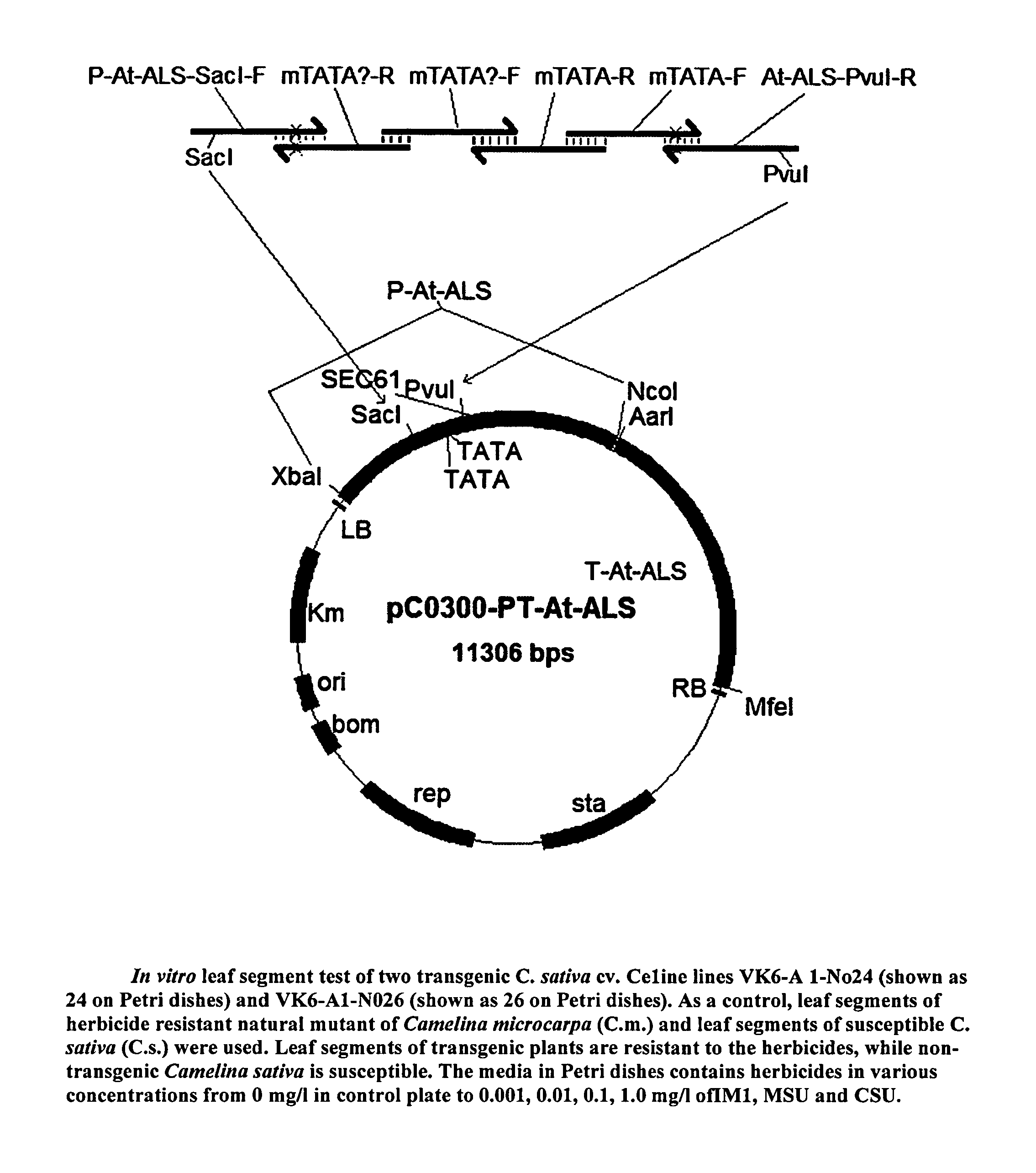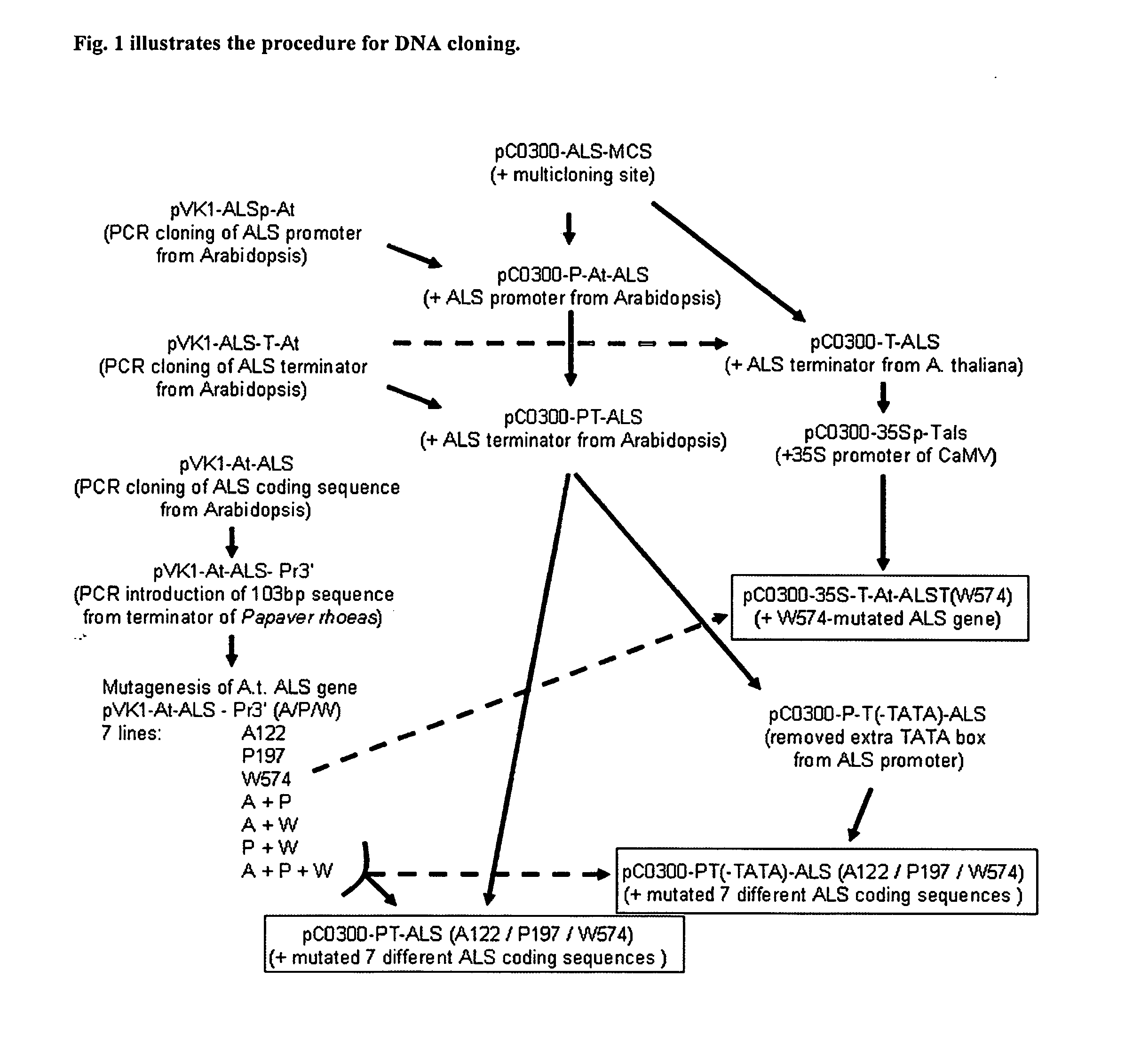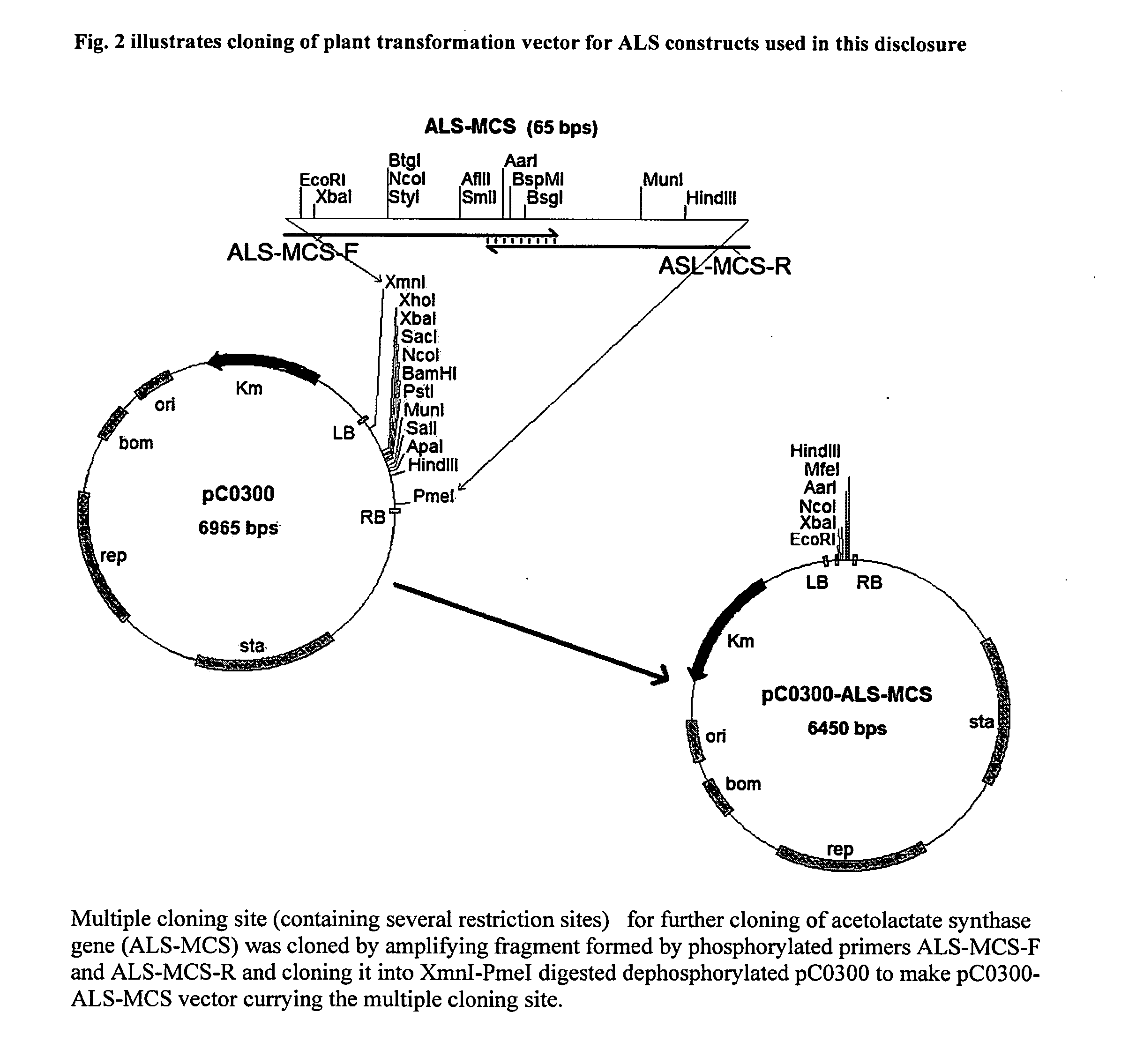Herbicide resistant Camelina Sativa
a camelina sativa, herbicide-resistant technology, applied in the direction of lyase, carbon-carbon lyase, enzymology, etc., can solve the problems of herbicide resistance, increased protein quality, increased oil content, etc., and achieves the effect of i>camelina/i>
- Summary
- Abstract
- Description
- Claims
- Application Information
AI Technical Summary
Benefits of technology
Problems solved by technology
Method used
Image
Examples
example 1
[0034]FIG. 1 illustrates the scheme of cloning plant transformation vectors containing ALS gene according to this disclosure.
[0035]Multiple cloning sites (containing several restriction sites) for further cloning of acetolactate synthase gene (ALS-MCS) was cloned by amplifying fragment formed by phosphorylated primers ALS-MCS-F (SEQ ID NO:1) and ALS-MCS-R (SEQ ID NO:2) and cloning it into XmnI-PmeI digested dephosphorylated pC0300 to make pC0300-ALS-MCS vector carrying the multiple cloning site as is shown in FIG. 2.
[0036]2535 by up-stream region of A.t. ALS1 gene, putatively containing promoter of ALS1 gene, was amplified in PCR using primers P-At-ALS-F1 (SEQ ID NO: 3) and P-At-ALS-R1 (SEQ ID NO: 4). Another 2069 by fragment, putatively containing A.t. ALS1 gene CDS, was amplified in PCR using primers At-ALS-F1 (SEQ ID NO: 5) and At-ALS-R1 (SEQ ID NO: 6). The third, 2434 by fragment, putatively containing A.t. ALS1 3′UTR, was amplified in PCR using primers T-At-ALS-F1 (S...
example 2
Plant Transformation
[0050]The seeds of Camelina sativa plant grown in greenhouse were sterilized by immersing in 70% ethanol for 1 min and then treating for 5 minutes in 2.5% active Cl (Na-hypoclorite) with an addition of Tween-20 (1 drop per 100 ml). After sterilization the seeds were washed three times in sterile water and placed on solid Murashige and Skoog (MS) agar medium (Murashige and Skoog, Physiol. Plant. 15:472-493, 1962) without sugars for germination. Sterilized seeds were germinated and grown 10 days on solid MS- medium without hormones. Green leaves served as a source of explants for transformation procedure.
[0051]Agrobacterium tumefaciens strain c58 carrying plasmid pC0300 containing various ALS gene mutation as described above, was grown overnight at 28° C. with shaking in liquid YEB medium (Lichtenstein and Draper, Gene Engineering of Plants. In: Glover D M (ed.) DNA Cloning—A Practical Approach, vol. 2. Oxford IRL, Oxford, pp 67-119, 1985) supplemented with 50 mg / l...
example 3
Molecular Analysis of Transgenic Expression
[0063]PCR Analysis
[0064]Total genomic DNA was isolated from leaf tissue of transgenic and non-transgenic Camelina sativa plants by using DNeasy Plant Mini Kit according to the supplier's instructions (Qiagen). The presence of the ALS gene in the herbicide resistant plants was determined by PCR analysis by using 24 nucleotides long primers specific to the promoter sequences of ALS and hpt genes. PCR reaction mix contained approximately 1 ng / μl of template DNA and DyNAzyme polymerase (Finnzymes) was used for amplification. PCR program consisted of: 94° C. for 2 min; 30 cycles of 94° C. for 30 sec, 48° C. for 30 sec and 72° C. for 2 min. Three micro liters of PCR reaction mixture was run at 100 V in 0.8% agarose gel containing ethidium bromide. No PCR product was obtained when non-transgenic Camelina sativa DNA was used as template, whereas when using transgenic Camelina sativa an amplification product of 700 nucleotides corresponding to the p...
PUM
| Property | Measurement | Unit |
|---|---|---|
| concentrations | aaaaa | aaaaa |
| concentrations | aaaaa | aaaaa |
| concentrations | aaaaa | aaaaa |
Abstract
Description
Claims
Application Information
 Login to View More
Login to View More - R&D
- Intellectual Property
- Life Sciences
- Materials
- Tech Scout
- Unparalleled Data Quality
- Higher Quality Content
- 60% Fewer Hallucinations
Browse by: Latest US Patents, China's latest patents, Technical Efficacy Thesaurus, Application Domain, Technology Topic, Popular Technical Reports.
© 2025 PatSnap. All rights reserved.Legal|Privacy policy|Modern Slavery Act Transparency Statement|Sitemap|About US| Contact US: help@patsnap.com



